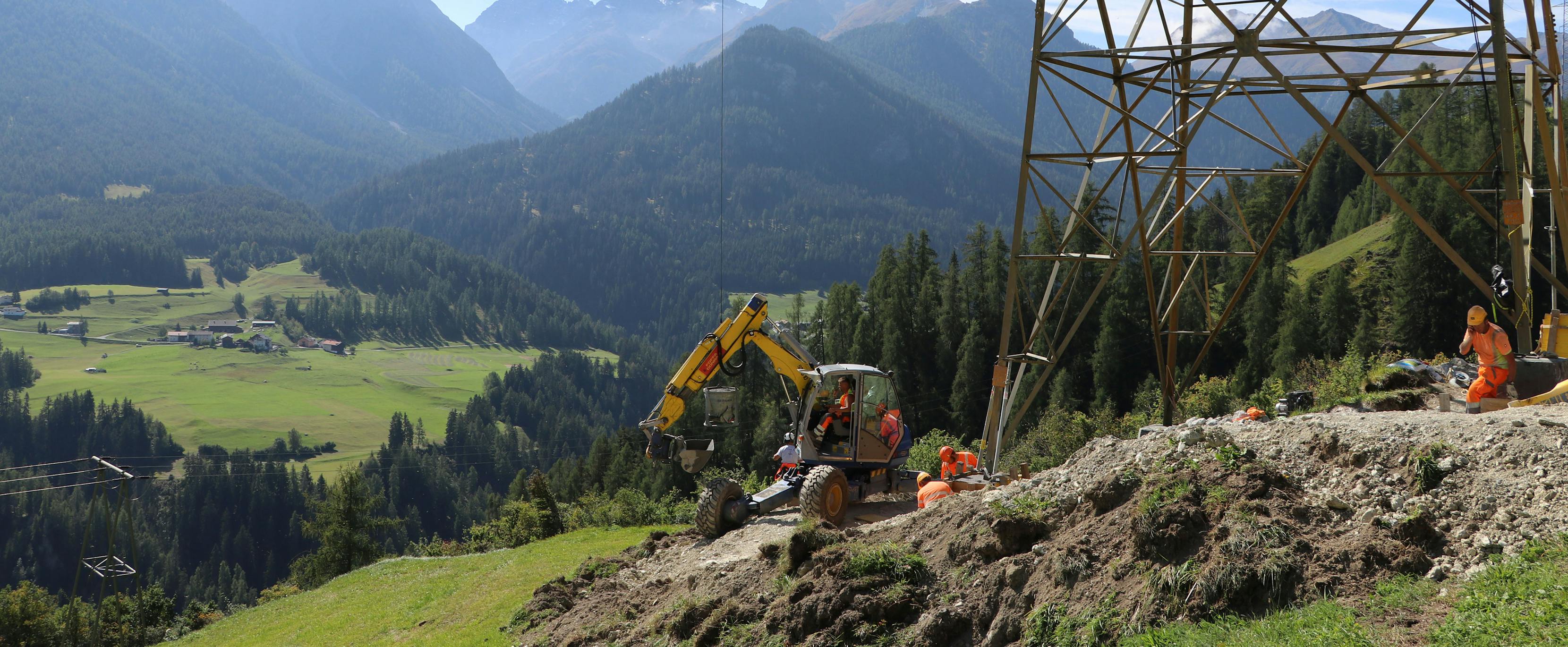Swissgrid has the go-ahead to commence assembly work for the reinforcement and construction of new pylons. The project will expand the security of supply in the canton of Grisons and increase the import capacity. As an alternative measure for the project, 1,100 pylons will be removed from the landscape.
The Federal Inspectorate for Heavy Current Installations (ESTI) issued Swissgrid with the construction permit for the expansion of the extra-high-voltage line between Pradella and La Punt. The two 380-kV lines that will operate in the future will allow Swissgrid to enhance the transport capacity, increase the security of supply in the canton of Grisons and support the transport of hydropower from the Engadine. They will also strengthen Switzerland’s connection to the European transmission grid. The project is part of the Strategic Grid 2025.
Swissgrid has spent the past two years renovating the foundations of the pylons. The pylons along the extra-high-voltage lines will now be reinforced and replaced where necessary. These measures were disclosed to the public in the autumn of 2019.
Roughly 3,500 tonnes of steel will be used for the pylons in order to expand the approximately 50-km-long line. Swissgrid is planning to complete the first stage of the construction work (from Pradella to Zernez) in 2021, and the second stage (from Zernez to La Punt) will follow in 2022. All pylons will receive a green protective coating. The grid project is expected to be completed by the end of 2022.
As an alternative measure for this expansion, Swissgrid is helping the Engadiner Kraftwerke (EKW) replace the 60-kV overhead line between Pradella and Bever with a 110-kV underground cable. This will remove 1,100 pylons from the landscape. The project will also enable the municipalities to connect to broadband Internet. The first section between Pradella and Zernez was put into operation in the summer of 2019. The commissioning of the second section between Zernez and Bever was completed at the end of 2019, while the dismantling of the 1,100 pylons has already started and is expected to be completed by mid-2022.
